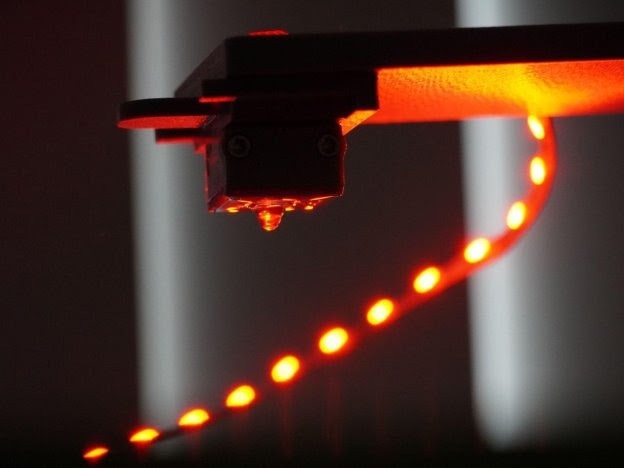Recent advancements in laser technology are leading to groundbreaking developments in the medical field, from improved treatment of cardiovascular diseases to higher-precision manufacturing of medical devices.

Image Credit: Vital 3D
Improvements in the speed and accuracy of laser technology are also at the root of the latest advancements in 3D bioprinting, setting the stage for rapid progress toward the creation of 3D-printed organs for transplantation. In the face of a growing organ donor shortage, laser-based bioprinting has the potential to help medical researchers meet the increasing worldwide demand for organ transplants.
The Role of Lasers in 3D-Printing Organs
Bioprinting is the process of precisely layering biomaterials, also known as bioinks, to form three-dimensional structures, from biological tissues to larger-scale organs. While bio-printed tissues are currently being used for medical research like drug testing, biotech firms are pushing the technology further, toward the development of full-sized 3D-printed organs for transplant.
Laser-based bioprinting is a cutting-edge technology that is helping to speed up this pursuit. According to Vidmantas Šakalys, CEO of Vital3D Technologies, a biotech company that specializes in 3D bioprinting solutions, the primary benefit of using lasers in bioprinting is their ability to enhance the speed and precision of the process.
“Using lasers in the bioprinting process allows for more precise control over the placement of cells and biomaterials, at the microscale level,” Šakalys says. “Laser-based methods can be made to be relatively fast and precise, compared to other bioprinting techniques. This is important for large-scale tissue fabrication, where speed is a key factor. Overall, lasers allow for a more nuanced manipulation of bio-inks, which is indispensable when replicating sophisticated organ structures."
From Speed and Precision to Improved Patient Safety
Successful bioprinting is about more than just speed and precision, Šakalys says. “Laser-based bioprinting is relatively gentle compared to other techniques. This helps to minimize damage to cells during the printing process and improve the overall viability and functionality of printed bio-structures.”
Lasers also help ensure that printed tissues have the appropriate structural characteristics, such as correct density, elasticity, and permeability, which are vital for their successful integration into the host body. By using this method, bio-printed tissues are treated as an extension of the body rather than a foreign object. This significantly reduces the risk of tissue rejection and limits the need for immunosuppressant drugs, which patients who receive transplants are often required to take.
Advanced laser technology helps ensure a higher degree of accuracy than traditional techniques, which contributes to increased patient safety and better medical outcomes,” says Šakalys. “Laser-based bioprinting is not just about creating structures, it's also about creating safe, viable, and compatible living tissues for medical applications.”
Some Challenges Remain
Despite its advantages, laser-based bioprinting still faces some challenges that need to be overcome to capitalize on its potential fully. One significant challenge is the high cost and complexity of laser equipment, which may limit its widespread usage in the medical field. Laser bioprinting is a time-consuming process, and is currently capable of producing only small structures. As such, clinical applications at present are somewhat limited.
Nevertheless, ongoing research and technological developments point to the possibility of tackling these issues, pushing laser-based bioprinting to new frontiers of biomedical science.